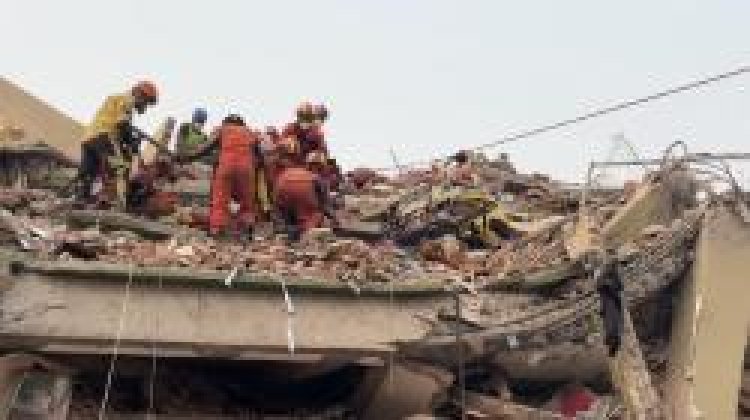Aid and Rescue Teams Flood into Myanmar as Earthquake Death Toll Reaches 1,700
International rescue teams and aid are arriving in Myanmar as the death toll from a devastating earthquake continues to climb, raising concerns about severe shortages of food, electricity, and water.

The magnitude-7.9 quake, one of the most significant to strike Myanmar in the past century, hit on Friday, resulting in approximately 1,700 fatalities, 3,400 injuries, and over 300 individuals still unaccounted for as of Sunday.
Min Aung Hlaing, chairman of Myanmar's State Administration Council, cautioned that the death toll might rise, according to state media reports, just three days after he made an unusual appeal for international assistance.
Countries including China, India, and Thailand have begun sending relief supplies and rescue teams to the affected regions. Additionally, Malaysia, Singapore, and Russia have contributed aid and personnel.
As international rescuers race against time to find survivors, reports indicate that on Monday morning, Chinese rescuers managed to free a child who had been trapped for approximately 60 hours beneath the rubble of the collapsed Sky Villa Condominium in Mandalay, according to China Media Group. So far, Chinese rescuers have retrieved six individuals in Myanmar, as reported by Xinhua News Agency.
More aid is anticipated in the coming days. China has committed to providing 100 million yuan in aid, with its first batch of relief materials departing on Monday morning. Meanwhile, New Zealand announced a donation of 2 million New Zealand dollars through the International Red Cross, while the UN pledged $5 million to support disaster relief efforts in the earthquake-stricken nation.
However, relief operations have been hindered due to significant damage to key infrastructure, including bridges, highways, airports, and railways throughout the country. Residents in Mandalay and Sagaing have reported that international aid has not yet reached them, according to Reuters.
In Sagaing, about 80 percent of buildings and homes have experienced varying degrees of destruction, with many completely collapsed, as reported by CMG. Local residents are struggling with severe shortages of clothing, food, clean drinking water, and medical supplies, as rescue efforts have largely depended on local authorities and spontaneous public initiatives.
"The destruction has been extensive, and humanitarian needs are growing by the hour," stated the International Federation of Red Cross and Red Crescent Societies.
The IFRC has initiated an emergency appeal for 100 million CHF to support 100,000 individuals with life-saving relief and early recovery assistance.
On Sunday, the World Health Organization classified the Myanmar earthquake as a top-level emergency, urgently requesting $8 million to save lives and prevent disease outbreaks over the next 30 days. It warned that the high number of casualties and trauma victims are particularly susceptible to infections due to Myanmar's limited surgical capabilities and that the already challenging conditions for the country's population of around 50 million could further heighten the risk of disease following this disaster.
In neighboring Thailand, which also felt the impact of the quake on Friday, there have been 18 fatalities, with 78 people still missing. Local authorities reported damage to buildings in 18 provinces across Thailand, though the situation has remained under control, with the risk of aftershocks gradually decreasing, according to the Department of Disaster Prevention and Mitigation.
Lucas Dupont contributed to this article for TROIB News












